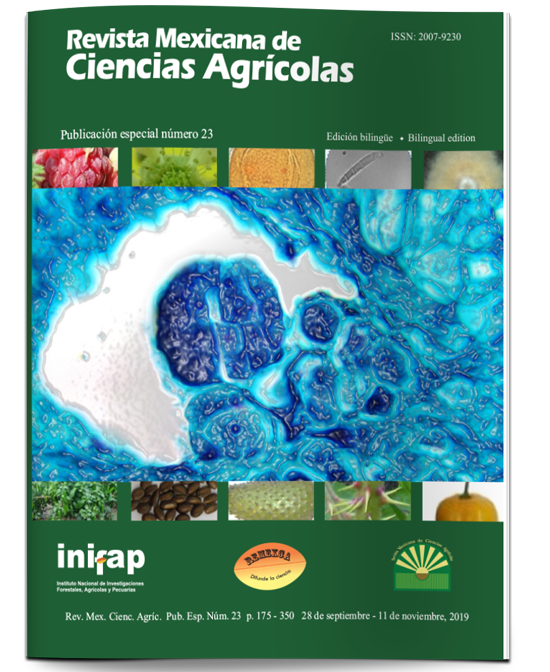Physicochemical properties of wild Rubus fruits with nutraceutical and nutritional potential
DOI:
https://doi.org/10.29312/remexca.v0i23.2028Keywords:
antioxidant capacity, flavonoids, polyphenolsAbstract
Rubus species are commonly exploited for fresh consumption, regional gastronomy and traditional herbalism, these benefits are attributed to the presence and action of their polyphenolic metabolites such as flavonoids and anthocyanins, which are known for their antidiabetic, anticancer, etc. In Mexico, around 15 wild species of Rubus are reported. However, population growth has invaded its territory, compromising its growth and development. Therefore, in order to rescue, study and incorporate Mexican wild materials into genetic improvement programs, the objective of this work was to evaluate the physicochemical composition and antioxidant activity in fruits of three wild species (Rubus adenotrichus, Rubus pringlei and Rubus glaucus Beth), compared against a commercial variety (Tupy). To accomplish this, fruits were collected in the state of Michoacán. Physicochemical parameters were evaluated and polyphenols, flavonoids, anthocyanins and antioxidant capacity (CA) were quantified in ethanolic extracts. In the results, the length of the fruit varied from 1.7-2.23 cm and the unit weight of 1.1-3.1 g, the ratio of total soluble solids and titratable acidity of 8.32-14.76. The total polyphenols reported data of 285.06-592.61 mg EAG/100 g PF, total flavonoids of 93.13-36.4 mg EQ/100 g PF and anthocyanins of 18.43-4.32 mg L-1. The CPA of 65.70-25.15 μM ET/g PF. This study showed that wild species comply with physicochemical and nutraceutical characteristics appreciated to be incorporated in breeding programs or the pharmaceutical industry.
Downloads
Downloads
Published
How to Cite
Issue
Section
License
The authors who publish in Revista Mexicana de Ciencias Agrícolas accept the following conditions:
In accordance with copyright laws, Revista Mexicana de Ciencias Agrícolas recognizes and respects the authors’ moral right and ownership of property rights which will be transferred to the journal for dissemination in open access. Invariably, all the authors have to sign a letter of transfer of property rights and of originality of the article to Instituto Nacional de Investigaciones Forestales, Agrícolas y Pecuarias (INIFAP) [National Institute of Forestry, Agricultural and Livestock Research]. The author(s) must pay a fee for the reception of articles before proceeding to editorial review.
All the texts published by Revista Mexicana de Ciencias Agrícolas —with no exception— are distributed under a Creative Commons License Attribution-NonCommercial 4.0 International (CC BY-NC 4.0), which allows third parties to use the publication as long as the work’s authorship and its first publication in this journal are mentioned.
The author(s) can enter into independent and additional contractual agreements for the nonexclusive distribution of the version of the article published in Revista Mexicana de Ciencias Agrícolas (for example include it into an institutional repository or publish it in a book) as long as it is clearly and explicitly indicated that the work was published for the first time in Revista Mexicana de Ciencias Agrícolas.
For all the above, the authors shall send the Letter-transfer of Property Rights for the first publication duly filled in and signed by the author(s). This form must be sent as a PDF file to: revista_atm@yahoo.com.mx; cienciasagricola@inifap.gob.mx; remexca2017@gmail.
This work is licensed under a Creative Commons Attribution-Noncommercial 4.0 International license.



